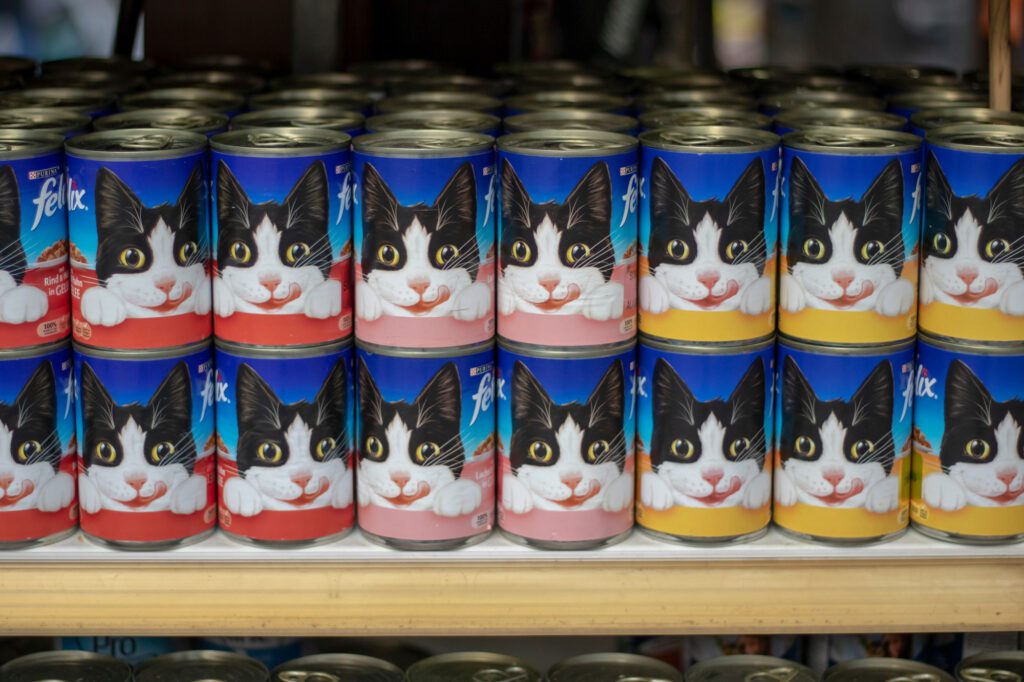Signal loss is less stressful for CPG companies, since they historically lack a direct relationship with their customers, at least in terms of data collection.
So, although third-party cookies are on the way out, it’s hard to mourn what you never had, said Emily Weishaupt, communications insights manager at Nestlé Purina.
“We never could use cookies for attribution in the past, so we’ve already had to build other measurement solutions,” she said. “It’s almost an odd benefit of being a CPG company right now.”
Weishaupt’s job is to identify media and creative optimization opportunities that can improve brand outcomes across Nestlé Purina’s portfolio, including Fancy Feast, Friskies, Alpo, ONE and Beneful.
As part of her remit, she uses research and analytics to figure out the “why” behind business outcomes, and she evaluates measurement partners to give Nestlé Purina a better sense of how its advertising performs across the media plan.
“We all put so much effort into making the best ads and the best media plan, but your ad is not the only thing people are being exposed to,” Weishaupt said. “That’s why it’s so important to think about the whole consumer journey.”
Measuring purr-suasion
Rather than obsess over conversion rates or try to tie ads to sales, which isn’t easy to accomplish even with piles of cookies, Nestlé Purina is big on marketing mix modeling (MMM) and attributes brand lift as a measure of campaign effectiveness.
But there are still gaps and blind spots. It can take months to get results from MMM reports, and although brand awareness and purchase intent scores can be indicators of sales performance or whether an ad resonates with customers, they are still proxy metrics.
Consumer surveys and historical brand lift data can only tell you so much because “humans are terrible predictors of their own behavior,” Weishaupt said.
”Even if someone outright tells you that they plan to buy a certain product the next time they’re in the store, there’s no guarantee, which is why purchase intent in a survey is never correlated to actual sales,” she said. “You can’t – or shouldn’t – use it as a metric to measure persuasion.”
In the past two years, Nestlé Purina has onboarded and worked with DISQO, a consumer insights platform that maintains a panel of users who opt to share their online activity and take brand-related surveys in return for rewards.
DISQO’s panel has 1.5 million users in the US, and the company claims to passively measure more than one billion digital touch points on a monthly basis without relying on third-party cookies or device IDs.
The survey app that panelists install on their computer or phone measures whether they’ve been exposed to an ad. After someone in the panel does see an ad that DISQO wants to track, it can email that person to participate in the attitudinal portion of its research, get a second opt-in to track post-exposure activity across platforms, then follow that up with more survey-based analysis.
Because DISQO gathers a mix of survey data and behavioral data, it’s able to get a sense of consumer opinions and track what people actually do online, said Stephen Jepson, the company’s EVP of advertising effectiveness.
In August, DISQO launched a tool to help advertisers measure what it calls “outcomes lift,” as in the incremental impact of a campaign on customer behavior beyond awareness.
For example, DISQO can see whether someone conducts a branded search after being exposed to an ad (“Beneful,” say) or whether they search for the category in general (“wet dog food”) or even for one of the brand’s competitors (“Rachael Ray dog food”).
A whole different animal
The panel can be a doggy door, so to speak, into closed-off retail data. Brands can see if participants go straight to the Purina site or a third-party review site and whether they visit Walmart, Amazon or Chewy.
“This helps answer questions like whether your campaigns are lifting your own site visitation or just lifting shopping behavior in general,” Jepson said. “And are you lifting your own outcomes or are you lifting outcomes for your competitors?”
And peeking into the lower funnel gives Nestlé Purina a feel for whether a lift in awareness translates to a potential lift in sales.
“It’s not an actual sale being attributed, but we can see whether we’re driving interest that can lead to action,” Weishaupt said. “And that’s a much better indicator than stated purchase intent.”
That said, brand lift is still a key metric for Nestlé Purina, she said. You have to drive interest before you can measure its impact.
But being able to attribute brand lift to outcomes helps avoid the tunnel vision that often happens when marketers rely too heavily on certain metrics.
“Brands can get stuck inside their own heads, and sometimes it’s hard to step back and get perspective on what our communications are actually doing for people,” Weishaupt said. “Even the most compelling creative and messaging might actually just be driving people to go and buy someone else’s wet food, and now we have the data to understand that.”
















